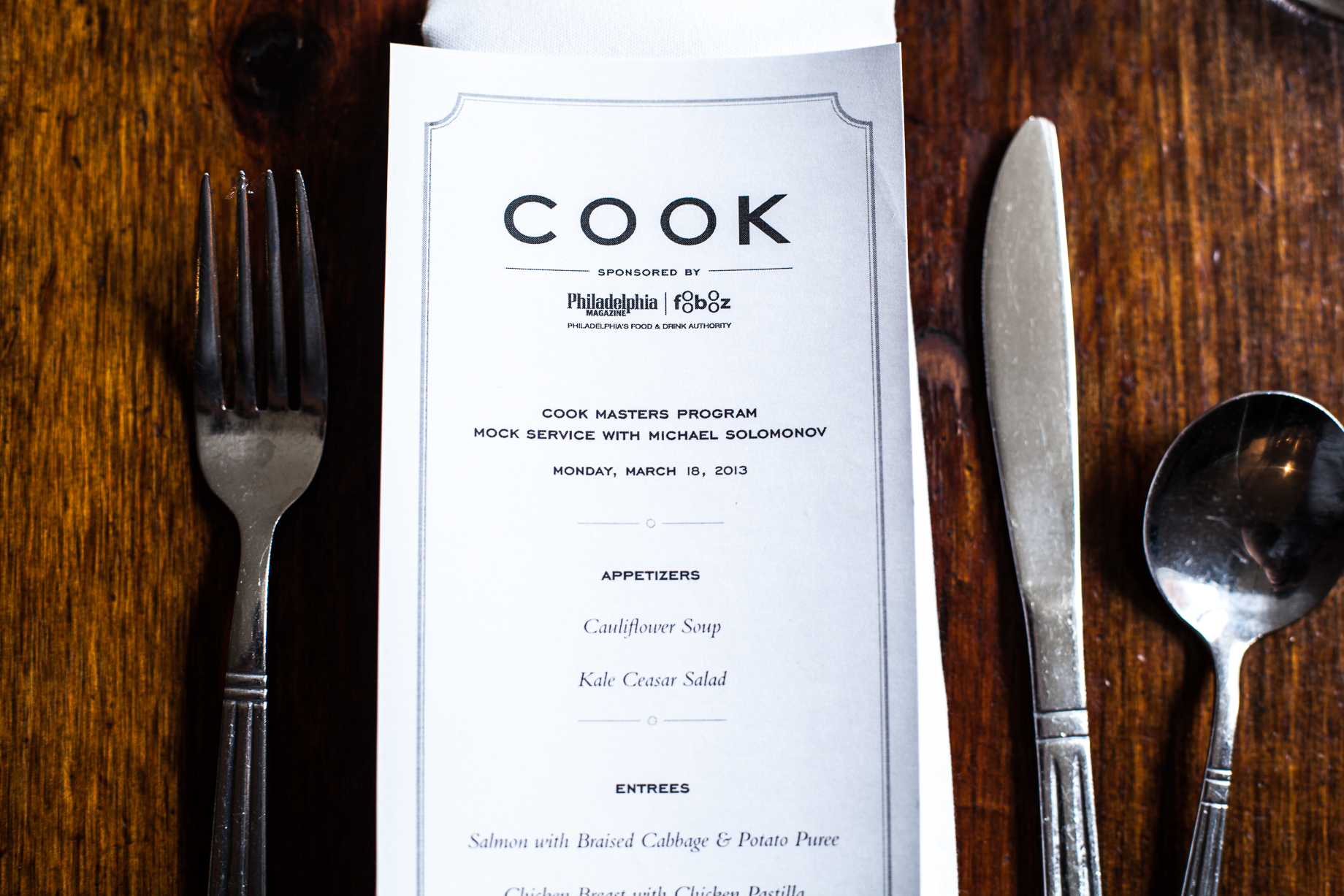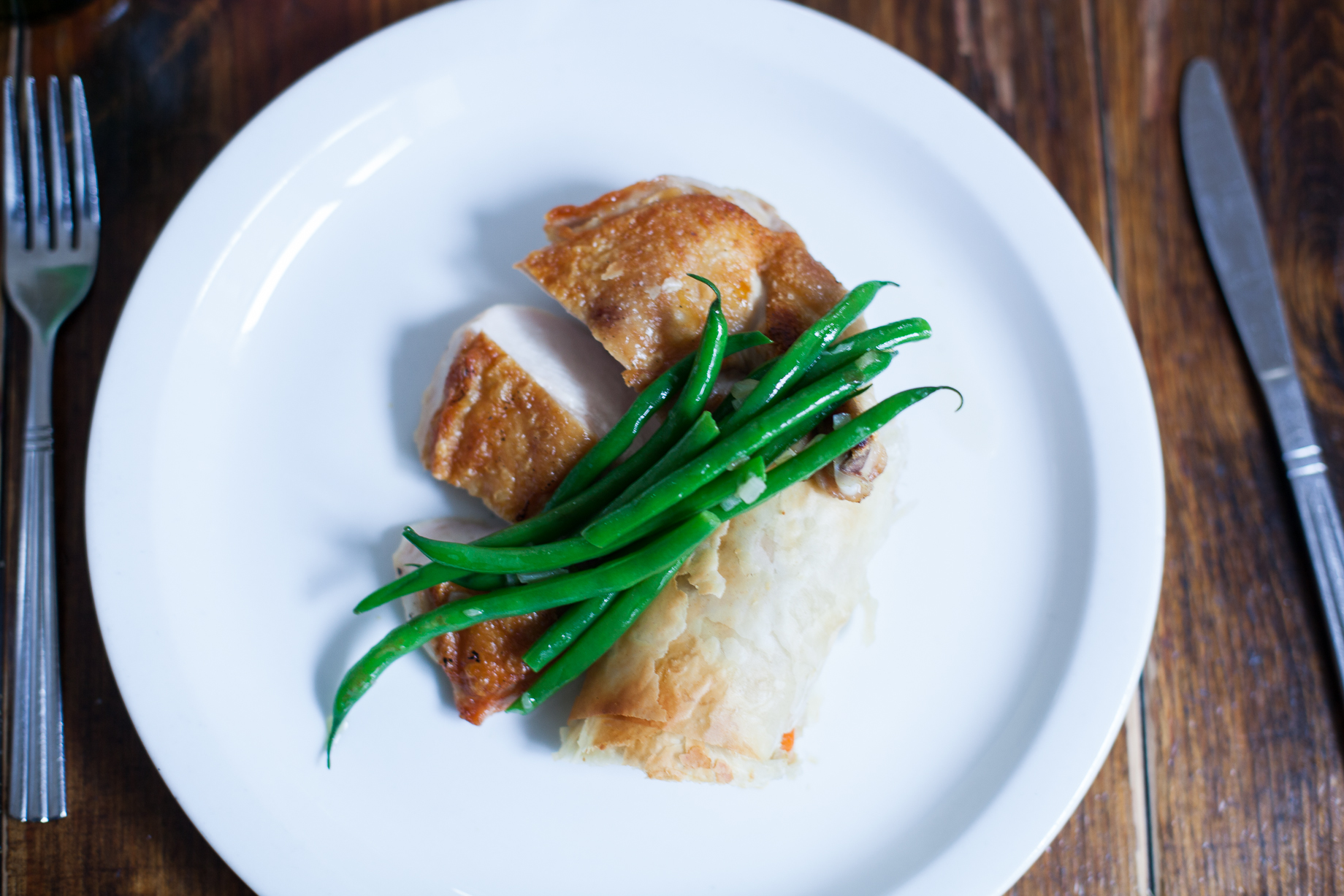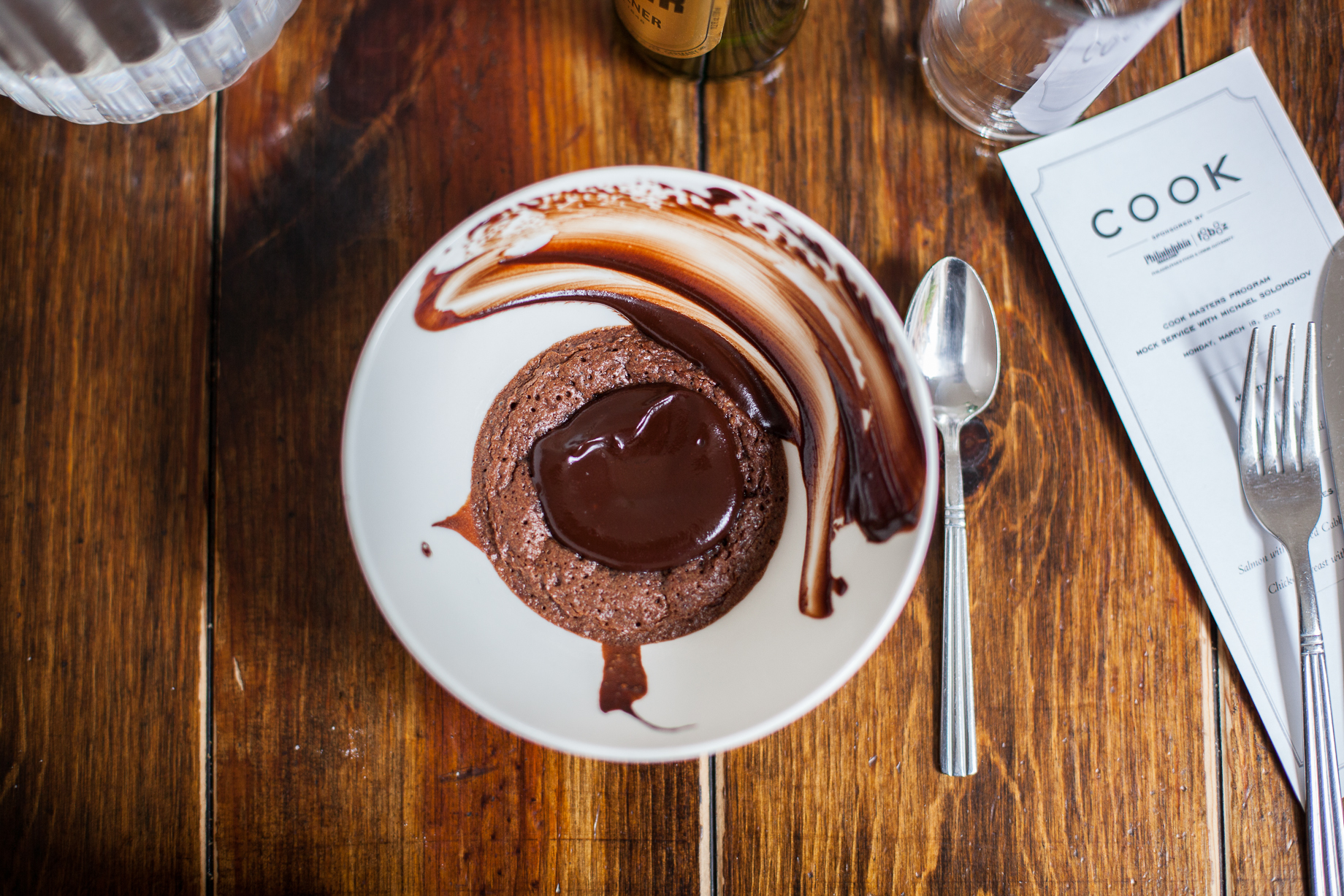“Use as much profanity as you want,” began Michael Solomonov cheerfully. “F-bombs, totally acceptable. Also encouraged: open-hand body slaps; impromptu high-stakes rock-paper-scissors games; and devious ways to get a man to bend down so you can finger-thwack him from behind. Those are today’s basic ground-rules. Everybody okay with that? Great, let’s get going!”
And so began our final COOK Masters class, with Solomonov in the lead like the naughty conductor of some deranged culinary orchestra. If you’ve read your Bourdain, or marveled at Ramsey’s foul-mouthed locutions on the telly, or even seen Ratatouille, you already know that professional kitchens can be a bit rough around the edges—seething, cursing vortexes of controlled chaos and intense personalities on a passionate mission to craft flavor and beauty. No matter where you eat, the person who cooked that exquisite dish for you is likely to be the type who, say, was once a roadie for Insane Clown Posse, or who could teach you the kind of filthy Spanish that would make his abuela gasp and faint. They truly are a “colorful” lot.
There are plenty of tyrants out there commanding their kitchens with expletives and berating and belittling, but that’s not what I’m talking about with Solomonov. He’s more of a mischievous sort, slinging the shit for fun, of course, but also to build camaraderie and the kind of healthy rivalry that gets everyone to goad everyone else into doing an even better job. The Japanese call this “sessa-takuma,” which literally means people polishing each another by grinding against each other’s hard surfaces. Faster, cleaner, prettier, tastier, better, whatever-er—that’s what gets cooks off, and they take pride in it.
Solomonov was here to throw us into the trenches with a “mock service” at Audrey Claire, the end-game of which was to be lunch for twelve. The slightly intimidating guest list included COOK’s Lily and Michelle, but also a bunch of high-profile chefs, including Jon Cichon of Lacroix and Peter Woolsey of Bistrot La Minette. But Solomonov quickly put things into perspective: “Oh yes, it’s very important to know your guests. Today we’re cooking for a bunch of French assholes, so we’re gonna put everything in nice tight lines for Cichon, and we’ll baste everything in a shit-ton of butter, because Woolsey will love that.” He’s friends with all these guys, of course, and I’m sure given half a chance they’d take the piss out of him right back (mock his chickpeas or something). Sessa-takuma….
Solomonov kept the menu simple, the point being solid execution more than culinary acrobatics:
Kale Caesar Salad with White Anchovies OR Cauliflower Soup
Chicken Breast with Pastilla & Haricots Verts OR Salmon with Potato Puree & Braised Red Cabbage
Chocolate Cake in a Bowl
Cheese & Fruit
I got right to work butchering the chicken and salmon. As Solomonov sauntered over to give a quick demo, his eyes instantly fixated on my vintage boning knife, easily the wickedest blade in my kit. “Oh yes, I wanna use this…” he whispered, picking it up and deftly sliding it through the wing joints, under the legs, down the keel, along the ribs, and past the wish bone, peeling off the tender flesh, all trimmed and ready for the hot pan…. Cutting up poultry is very satisfying once you get good at it, though in a disturbingly Hannibal Lecter-ish sort of way. There’s the beautiful whole chicken on the board, and after a few deft strokes there’s the chicken lined up neatly in the pan, dispatched into twelve or fifteen pretty pieces. As Solomonov was finishing the job, I confessed to him my fondness for poultry cutting. “Oh, me too,” he replied, putting down the evil-looking blade. “Cutting up chickens is like… totally ‘therapeutic’ or something.” Then he wandered off to check on the chocolate cake team.
Being a big fan of Moroccan cuisine, I was excited to have pastilla on the menu. To the Western palate, pastilla is an improbable dish—basically a savory “pie” of crispy phyllo layered around spiced chicken, cooked eggs, sugared almonds and cinnamon, dusted with confectioner’s sugar and additional cinnamon. Traditionally it’s supposed to contain pigeon, sometimes with the bones still in there. Lacking pigeons, we used the chicken thigh and leg meat instead, chopped up with the hearts, livers, and gizzards. The bones we roasted and left for the Audrey Claire stockpot. Like all successful chefs, Solomonov likes to utilize absolutely everything. Piling a bunch cauliflower stems into a sautoir, he remarked, “Your average schlub might just throw this away, but it’s still a few bucks a pound, and if you can figure out a way to sell it for eight or nine, you should.” The cauliflower soup was garnished with cauliflower leaves, and the chicken skin was fried into cracklings for the Caesar salad. Nothing wasted.
For all of his “off-the-wallness,” Solomonov is actually pretty meticulous, and his cooking is subtle. He insisted, for example, that onions be minced petal-by-petal instead of the usual way, and the finished product was indeed more appealing. He’s famous for his hummus, too, because he knows how to coax the best qualities out of the humble chickpea. And like an orchestral conductor, he has the capacity to be simultaneously “all over the place” and in specific places as needed, calmly calling up the right “instruments” at the right time, evenly communicating his expectations and cuing all the details that make for a fine dish and an exceptional service. He is also organized and had plenty of practical advice: “Keep all your mise squared up and neat, at 90° angles. Everything in the smallest possible containers. Proteins on ice. Portions weighed out, not just eyeballed. Nothing on your cutting board that isn’t about to be cut. Stack of hot pans at the ready. Wipe down constantly. Keep everything clean.”
You can mess around in the kitchen all you want—laugh and point at the dumb-ass who broke the hollandaise again, spatula-slap the FNG on the thigh, and make rude comments about people’s manhood—but at the end of the day, you’ve got to have your shit together, tight and ready to kick it when the tickets start pouring in.
Like most chefs, Solomonov seems to prefer simple things. At the end of service, he was slathering chunks of baguette with the Caesar dressing and rolling little bits of Grana Padano around in some whiskey barrel–aged maple syrup. Middle Eastern food is known for such sophisticated, skillful simplicity, and Solomonov is well versed in creating dishes that simply highlight the essence of their ingredients. For this menu, he didn’t even include any sauces, explaining that sometimes it’s better to just cook a quality protein perfectly and leave it at that. “It’s good to let things speak for themselves,” he said. And turning to the guy making the soup: “Cauliflower is white, right? So our technique needs to keep the soup as white as possible. And what does cauliflower taste like? Right, like cauliflower! So we’re gonna build some mad flavor here—cauliflower flavor. You know what this soup is gonna be? Like a KARATE-CHOP OF CAULIFLOWER, RIGHT IN YOUR FACE!”
Need I say more about what makes this chef tick? It was definitely a lot of fun to meet and cook with him!
Photos: Yoni Nimrod.
Back to Blog






